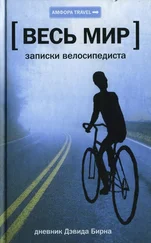The other self-deception—that life has meaning—is famously dealt with by religions all over the world. Our susceptibility to this comforting idea is impossible to deny. I would argue that while religions might indeed be a lot of superstition as well as an unfortunate excuse for violence and countless horrors, they might also serve a purpose. It would seem that at the very least they make it easier to go on, to function, to make and do, if one believes that our own (human) lives have a meaning.
Remade
Though Berlin was remade after World War II had reduced much of it to rubble, progress was hobbled by the Wall and by the occupation on both sides of that barrier—the Soviets in the East and the Yanks and British in the West. Vast areas in what used to be the center were located close to the Wall and were left as fields and vacant lots, sometimes occupied by gypsy caravans and flea markets. It was as if they knew the Wall would eventually come down, so these spaces were never developed. Since 1989, with the Wall and most of the occupiers gone, a strange new city has arisen. In one former prewar center, Potsdamer Platz, the massive new edifices of the corporate state have gone up—Sony, Mercedes, Siemens, and others have new steel-and-glass buildings there. Nearby, the new government center, rapidly relocated here from the tiny town of Bonn, is also trying to find its place. A transportation hub has opened that was built by moving the river and then putting it back. None of this development is organic; it’s city planning on a massive scale. It’s a colossal experiment that poses the question, Can one create a (vibrant) city center from scratch?
I bike around Mitte where the galleries and cafés are now being elbowed aside by luxury boutiques, as they were in SoHo in New York. And a couple of years after I began writing this I now sense that Berlin is indeed being acclaimed as a cultural capital, perhaps even as the cultural capital, of Europe. Despite some areas of towering corporate glass and accompanying wastelands of concrete plazas it does indeed seem as if the impossible can happen—a once vibrant city, a center of European culture, has come back to life.
Istanbul
Ride a bike in Istanbul? Are you nuts? Yes . . . and no. The traffic here is pretty chaotic and there are a number of hills, but in recent years the streets have become so congested that on a bike I can get around the central city—in the daytime at least—faster than one can in a car. As in many other places I’m almost the only one on a bike. Again, I suspect that status might be a big reason for this—bike riding, in many countries, implies poverty. I rode around Las Vegas and was told that the only other people on bikes there were people who had lost everything, probably through gambling. They’d lost their jobs, families, houses, and, I guess—ultimate insult for an American—their cars. All they had left was a bicycle to get around on. As cheap cars become available I’m afraid lots of folks in India and China will ditch their bikes as quickly as they can so they too can be elegant modern car drivers.
I pass cafés full of people intensely playing backgammon or smoking hookahs. I get some designer knockoffs at a shoe store. The minarets of the mosques make handy landmarks. I love this city. I love its physical location—bounded by water, dispersed across three landmasses, one of which is where Asia begins. Its way of life, which seems Mediterranean, cosmopolitan, and yet tinged by the deep history of the Middle East, is intoxicating.
Mostly I stick to the many roads that run along the Bosphorus and the Marmara Sea, thus avoiding the many interior hills. Occasionally I see some old wooden houses, so one can imagine what this place must have looked like before they all collapsed or were set on fire.
Ugly Modern Buildings as Religious Icons
As I bike around I note that the old buildings—wooden houses, nineteenth-century European-style palaces, and Ottoman-era edifices—are dwindling. Everywhere I see bland concrete apartment buildings going up. I wonder how buildings and neighborhoods of such obvious character can so easily be eliminated. What is everyone thinking? I sound a bit like Prince Charles in this, but I wonder, how is it that no one can see what is happening?
Throughout the world the international style, as the Museum of Modern Art calls it, has been used as an excuse for every bunkerlike structure, atrocious housing project, lifeless office building, and ubiquitous, crumbling third-world concrete housing block and office. Crap the world over has the imprimatur of quality because it apes, albeit badly, a prestigious style. Why has this style caught on so thoroughly? Why, all over the world, are beautiful cities being turned into a giant maze of gray upturned bricks with grids of identical windows in them?
Maybe, I think to myself, these structures express something. Something more than the bottom line on a developer’s budget. Maybe, besides being easy and cheaper for the developers to build, they also stand for collective desires and aspirations of some sort. Maybe they represent or symbolize, for many people, a new start, a break with all the previously built things that have surrounded the townsfolk. And, especially in old towns, new buildings represent an end to history. They declare, “We will not be like our fathers! We are not ruled by the kings, czars, emperors, shahs, or any of those idiots from our past. We, a modern people, are different. We are no longer peasants. We are no longer hicks or hillbillies. We want no part of the visual system associated with our past, however noble it might be, and of which our memories are made. The weight of our history smothers us. It is, for us, a visual and symbolic prison. We will make a fresh start, like nothing ever seen on the face of the earth. (God knows, the Chinese are doing this in leaps and bounds.) And, if we have to do some damage in the process, then so be it.” At least that’s the emotional logic I imagine many people here and elsewhere feel.
These new buildings may not be beautiful. They may not even be utopian, as some architectural scholars and theorists of modernism might have hoped, but they are cheap, functional, and they don’t remind people of anything that went before. The walls are straight, not crooked and wobbly, with angles that are, thank God and modern engineering, at 90 degrees, and the plumbing works—for now. For better or worse, they imply a self-determination. They say, “the future will be ours.” The new generations will shrug off the weight of countless millennia and symbolically declare themselves free. Wrongheaded maybe, ugly for sure, but free. And there lies the religious, ideological, and emotional element inherent in these monstrosities.
These buildings represent the triumph of both the cult of capitalism and the cult of Marxist materialism. Opposing systems have paradoxically achieved more or less the same aesthetic result. Diverging paths converge. The gods of reason triumph over beauty, whimsy, and animal instincts and our innate aesthetic sense—if one believes that people have such a thing. We associate these latter qualities with either peasants—the unsophisticated, who don’t know any better than to build crooked walls and add peculiar little decorative touches—or royalty and the upper classes—our despicable former rulers with their frilly palaces, whom we can now view, in this modern world, as equals, at least on some imaginary or theoretical level.
Here is a photo of Salvador, Brazil, where a district of warehouses and colonial commercial buildings has almost been completely transformed into a bland everytown business district. A musician friend there offered that these zones, once so full of character, should have been treated “like European cities.”
Читать дальше









